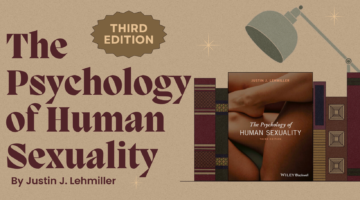What’s the Most Effective Way to Reduce Abortion? Better Sex Ed and No-Cost Contraception
May 16, 2022 by Justin Lehmiller
The leak of a draft decision from the Supreme Court to reverse Roe v. Wade has reinvigorated public discourse on abortion in a way I haven’t previously seen in my lifetime. There is much to be said about this important topic–and much that we don’t yet know. This includes what the Court’s final decision will actually look like, as well as what the collateral damage will be if Roe were to be overturned. Just to name a few: how would this affect in-vitro fertilization and stem cell research, access to contraceptives and emergency contraception, and other rights rooted in legal reasoning similar to Roe?
However, one thing that is clear–and that we’ve actually known for quite a long time–is that banning and restricting access to abortion isn’t a particularly effective way of reducing abortion. Far from it. Yes, it may very well reduce the number of abortions to some degree, but demand for the procedure will not cease. Unintended pregnancies will emerge. Rapes will happen. Life-threatening pregnancies will occur. There are all kinds of reasons why abortion will continue to be sought regardless of its legal status, and the procedures performed will only become more dangerous if they occur outside of the medical system.
If the goal of abortion bans is really to reduce abortion, there’s actually a far better, data-backed solution that will also preserve maternal health: providing comprehensive sex education and access to no-cost contraception.
As some evidence of this, consider a study published in the journal Obstetrics & Gynecology. In this study, 9,256 women and adolescent girls who were at high risk for unwanted/unintended pregnancy enrolled in a longitudinal contraceptive study. All participants were recruited through abortion clinics and targeted advertisements in St. Louis, Missouri. The average age was 25, and about one-third of the sample consisted of women with low levels of educational and economic attainment.
All of the women were provided with contraceptive counseling in order to help them determine which method would work best for them. Afterward, each participant received their choice of contraceptive for free. The vast majority of women opted for an intrauterine device (IUD) or subdermal implant, both of which were emphasized in counseling for their superior effectiveness and long-acting abilities (you can read more about effectiveness rates for these and other forms of contraception here).
Results indicated that there was a dramatic difference in abortion and teen pregnancy rates for women involved in the study compared to both the overall rates in the local area, as well as the national rates. For instance, the teenage birth rate for participants in this study was 6.3 per 1,000 girls, dramatically lower than the national rate of 34.3 per 1,000 girls.
Likewise, the abortion rate for study participants fluctuated between 4.4 and 7.5 per 1,000 across the three years of the study, which stands in stark contrast to the overall national rate (at the time of the study) of 19.6 per 1,000. In other words, this intervention resulted in an abortion rate for study participants that was two-thirds to three-quarters lower than the national rate.
These findings suggest that the key to reducing teen pregnancy and abortions in the United States may reside in increasing access to sex education and no-cost contraceptives, particularly long-acting reversible methods such as IUDs and subdermal implants.
In fact, the study’s authors estimate that if the same changes in contraceptive behavior occurred nationally, the abortion rate could fall up to 78%.
It is concerning that abortion rights appear to be on the precipice of falling at a time when sex education throughout much of the country remains poor and so many roadblocks to accessing highly effective contraceptives exist. A ban on abortion that goes alongside inadequate sex ed and barriers to contraception would represent a triple threat to public health.
Want to learn more about Sex and Psychology? Click here for more from the blog or here to listen to the podcast. Follow Sex and Psychology on Facebook, Twitter (@JustinLehmiller), or Reddit to receive updates. You can also follow Dr. Lehmiller on YouTube and Instagram.
To learn more about this research, see: Peipert, J. F., Madden, T., Allsworth, J. E., & Secura, G. M. (2012). Preventing unintended pregnancies by providing no-cost contraception. Obstetrics & Gynecology. doi: 10.1097/AOG.0b013e318273eb56
Image Source: Photo by Ian Hutchinson on Unsplash

Dr. Justin Lehmiller
Founder & Owner of Sex and PsychologyDr. Justin Lehmiller is a social psychologist and Research Fellow at The Kinsey Institute. He runs the Sex and Psychology blog and podcast and is author of the popular book Tell Me What You Want. Dr. Lehmiller is an award-winning educator, and a prolific researcher who has published more than 50 academic works.
Read full bio >


